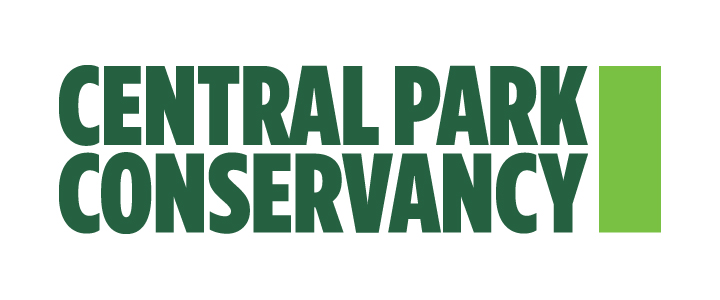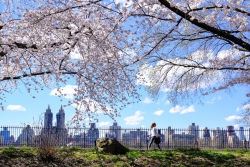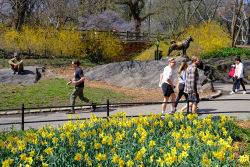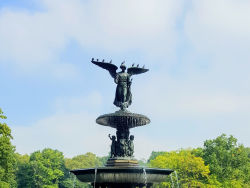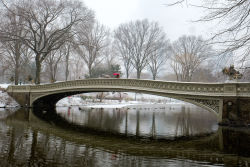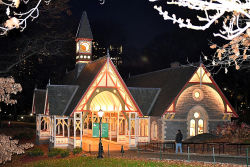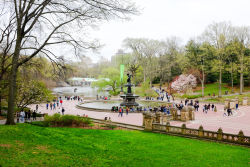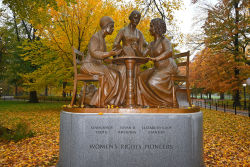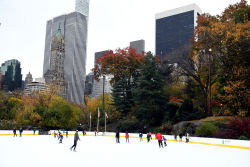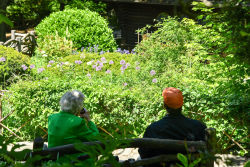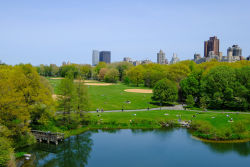Central Park
Seneca Village
What was here before?
Seneca Village was located from 82nd to 89th Streets between Seventh and Eighth Avenues in what is now a section of Central Park.
Beginning in 1825, parcels of land were sold to individuals living downtown, and to members of the African Methodist Episcopal Zion Church, considered one of the largest and most prosperous congregations of African Americans in 19th century America. By the 1850s, the community expanded to over 225 people; two-thirds were African American, and the rest were primarily Irish immigrants. Over half of the African American population owned their homes — making it the largest concentration of Black property owners in the city at the time. The presence of a natural spring near 82nd Street likely provided the fresh drinking water necessary for the maintenance and stability of a large community.
Religion played an enormous part in most communities in the nineteenth century, and Seneca Village was no exception. Two churches, the African Union Methodist and the AME Zion (today known as Mother AME Zion), were constructed in the village near 85th Street. Their congregations were completely African American. Colored School No. 3, one of the few black schools in New York City, was established in the 1840s adjacent to the African Union Methodist Church. All Angels' Church, an affiliate of St. Michael's (currently on Broadway at 99th Street), was built in 1849. It had a racially integrated congregation of African Americans from Seneca Village and Irish and German parishioners living in the village and nearby.
How did this site become a park?
In 1853, the state legislature authorized the use of "eminent domain," the taking of private property for public purpose, to create Central Park, the city’s first large public park. The site originally encompassed the land from 59th to 106th Streets between Fifth and Eighth Avenues. In 1863, additional parkland was annexed to include the area between 106th and 110th Streets. Those who owned land within the boundaries of the proposed park were compensated for their property, though many protests were filed in New York State Supreme Court, as is often the case with eminent domain when owners contest the amount of settlement. Approximately 1,600 people, who owned, lived, and worked on the 843-acre tract of land, had to move when the Park was created.
Research shows that residents and institutions of Seneca Village dispersed and did not re-establish their community in another location.
What is this site named for?
The exact origins of the name Seneca Village are unknown and some references from the time of the village located the community in Yorkville. The name was first recorded by a priest affiliated with All Angels’ Church. Some have posited that it was a derogatory term likening the village to an uncivilized society. Other researchers have theorized that if the name originated in the African American community, it may have been after Seneca Falls in upstate New York for its history of abolitionism.
Check out your park's Vital Signs
Clean & Safe
Green & Resilient
Empowered & Engaged Users
Share your feedback or learn more about how this park is part of a
Vital Park System
Contacts
Central Park Information: (212) 310-6600
Central Park Information (for the Hearing Impaired): (800) 281-5722
Belvedere Castle, The Henry Luce Nature Observatory: (212) 772-0210
The Charles A. Dana Discovery Center: (212) 860-1370
The Dairy Visitor Center and Gift Shop: (212) 794-6564
North Meadow Recreation Center: (212) 348-4867
Loeb Boathouse (Bike rentals, boat rentals & gondolas): (212) 517-2233
Carousel: (212) 879-0244
Fishing at Harlem Meer (Catch & Release): (212) 860-1370
Harlem Meer Performance Festival: (212) 860-1370
Horseback Riding - Claremont Stables: (212) 724-5100
Metropolitan Opera (Performances on the Great Lawn): (212) 362-6000
New York Philharmonic (Performances on the Great Lawn): (212) 875-5709
Shakespeare in the Park - The Public Theater at the Delacorte Theater: (212) 539-8655
Central Park SummerStage: (212) 360-2777
Swedish Cottage Marionette Theater: (212) 988-9093
Tennis: (212) 280-0205
Weddings, Ceremonies and Photography at the Conservatory Garden: (212) 360-2766
Wildlife Center & Tisch Children's Zoo: (212) 439-6500

